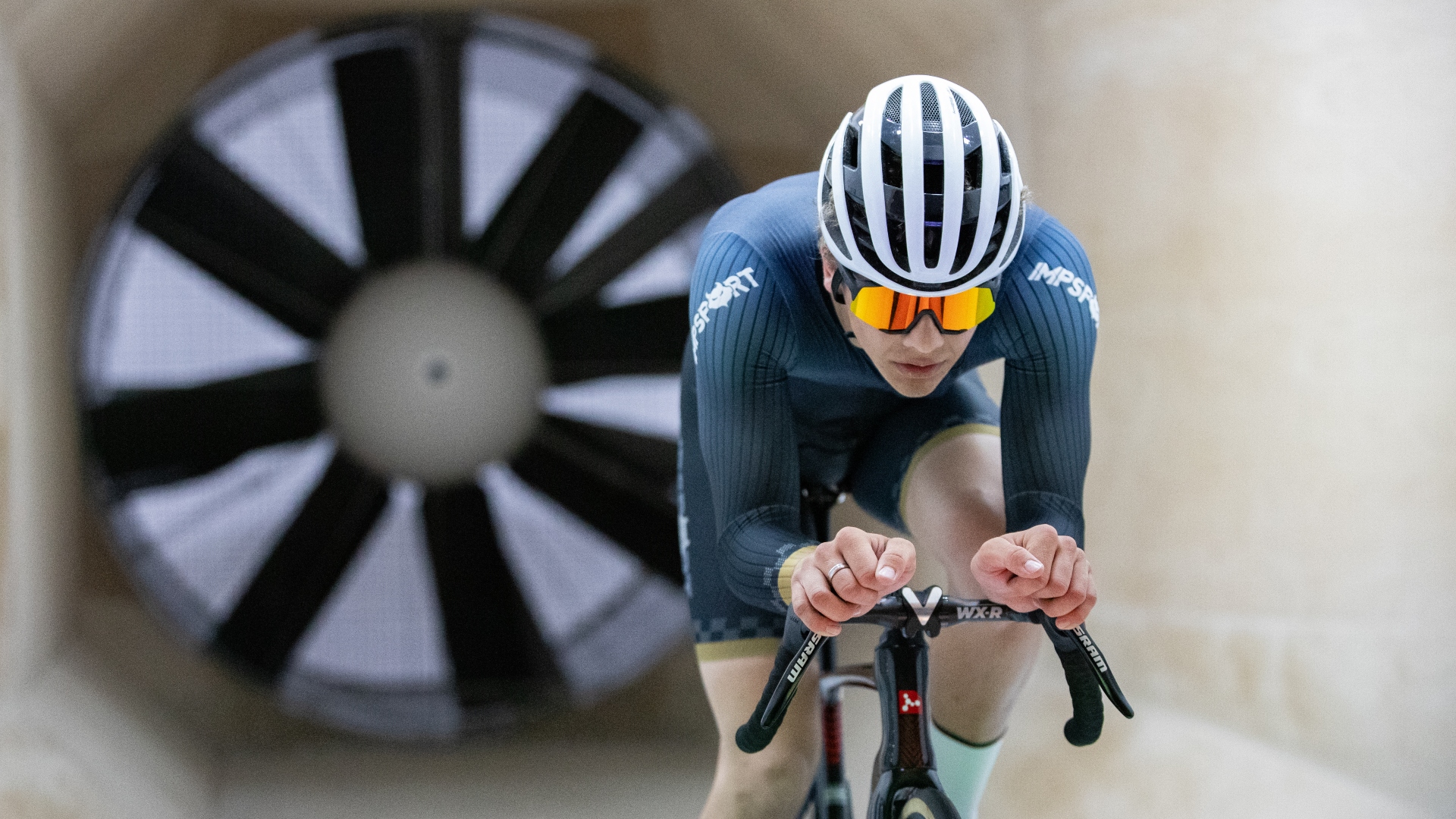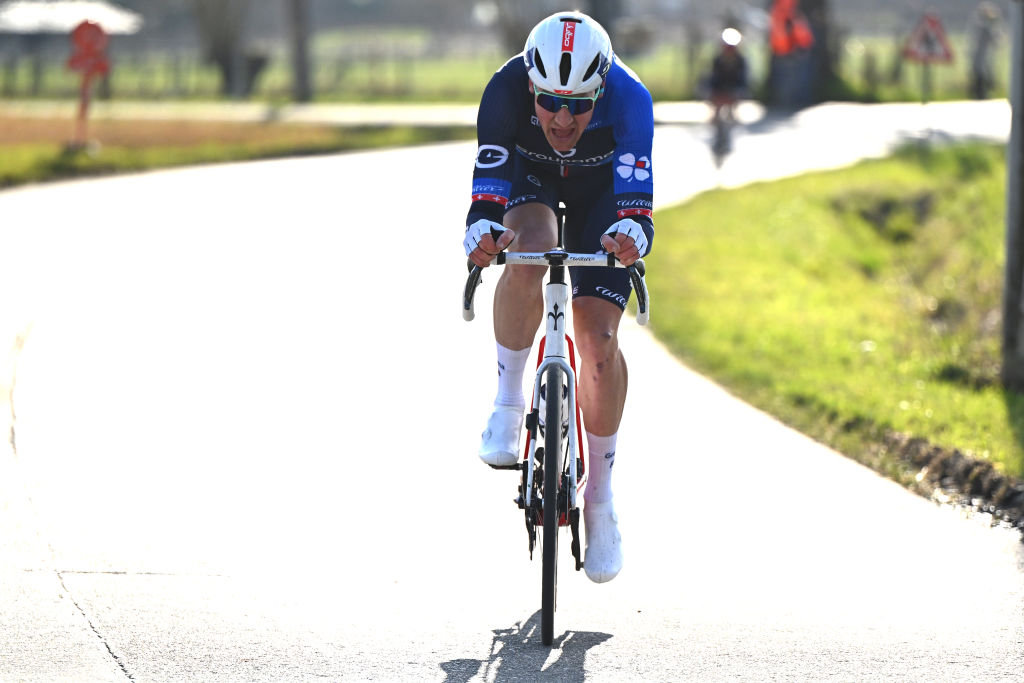The UCI is banning handlebars narrower than 40cm - here's why I think it's a bad idea
The new UCI rulings might be well intentioned, but once again women’s cycling seems to have been overlooked


Another day, another UCI rules update.
As of 1st January 2026, new regulations are set to land on both road and track cycling in a bid to improve rider safety; time trial helmets have been banned for use in road races, fork widths have been limited – they're watching you, Factor – and perhaps most old-school of all, handlebar widths will be limited to 400mm edge to edge.
It's this last update, in particular, that has scratching my head. Though we don't know further details at this stage, a blanket rule, in my opinion, risks being a step backwards, disregarding women's bike fitting, as well as those who are smaller in stature.

Tom Pidcock runs a 360mm bar on his Scott Addict RC and is by no means short at 170cm or troubled by bike handling
For years, handlebar width has been trending downward, and not without good reason.
The most obvious motive has been a pursuit for 'free speed'; narrower bars reduce frontal area, improving aerodynamics. We’ve tested it – in wind tunnels, with real riders, in real-world positions – and the gains are measurable. For something so simple, the advantage is significant.
To me, it’s always seemed slightly baffling that more riders haven’t adopted narrower set-ups, especially with the rise of integrated cockpits and aero-optimised positioning. I suppose now I shan't have to wonder.
But performance is only part of the picture. Narrower bars can offer genuine comfort benefits. Bike fit, as a science, has come a long way in the last decade, and many riders now find themselves better supported and more relaxed – especially at the wrists – on narrower bars. Personally, I’m 6ft tall and reasonably broad, but my go-to bars are 360mm at the tops and 400mm at the drops. For me, they are supremely comfortable. From next year, they'd be outlawed under the new UCI rule.
The latest race content, interviews, features, reviews and expert buying guides, direct to your inbox!
There's also a biological difference to consider. During my time at Cycling Weekly, I’ve spoken to numerous bike fitters, including Tim Allen of Soigneur CC, who told me that, in “many cases”, women are best suited to 360mm handlebars, which typically measure around 380mm from edge to edge. That’s not a stylistic choice – it’s down to anatomy. On average, women have narrower shoulders than men, which can only mean this rule is going to impact a larger number of riders in the women's peloton than in the men's.
The UCI has allowed nuance with taller riders – who are permitted an extra 5cm in time trial extension reach – so surely they can apply the same logic to bar width?

The governing body's official line reads:
“The UCI Management Committee [...] approved several propositions from the Equipment and New Technologies Commission... Some of these propositions follow recommendations made by SafeR, the organisation dedicated to safety in professional road cycling.
"The increasing speed of races and the safety implications of developments in equipment are one of SafeR's main areas of focus. This has been the subject of detailed consultations with teams, organisers and riders, including the distribution of questionnaires to all professional riders and teams."
I can understand the safety angle in theory. Narrower bars could, perhaps, limit leverage or reduce stability in certain high-stress scenarios, but let's remember these are professional bike riders. I totally accept that there is a bar width which becomes dangerous, but 400mm is almost boatlike for many riders by today's standards. Dan Bigham once rode with 270mm bars, and he managed just fine.
To me, it feels like a broad-brush solution to a niche problem, with real consequences for riders whose positions have been fine-tuned over years.

Stefan Küng has no issues with bike handling and narrow bars, given his Classics specialism
Because narrower bars are so fundamentally beneficial, I expect teams will quickly begin exploring ways around the rule.
The regulation specifies a 400mm external width, but the current minimum distance between the lever hoods remains 320mm. That leaves a decent bit of grey area – and you can bet engineers are already sketching solutions. We could see structural bar ends to meet the 400mm rule, or perhaps handlebars that curve back on themselves in order to keep a riders hands narrower whilst still meeting the 400mm requirement.

Tim wellens already plays it pretty close to the rules with his turned in hoods
With all that said, I admit there isn't really an easy solution, but there are certainly revisions which would make this ruling a little more palatable.
First and foremost, it would be nice to see a distinction made between the men's and women's peloton, or at the very least, some justification as to why the decision appears to be a blanket one.
Secondly, I really believe a 400mm minimum requirement is too wide. I'm not saying there should be free for all here, but allowing say 360mm handlebars that are flared seems like a much more realistic option, one that won't have the peloton heading back to the service course for a bike fit.

Joe is Cycling Weekly's former tech writer. He's always had a love for bikes, since first riding a two wheeled steed before the age of four. Years down the line, Joe began racing at 16, and enjoyed great experiences internationally, racing in Italy, Spain and Belgium to name a few locations. Always interested in tech, Joe even piloted his Frankenstein hill climb bike to a Junior National Title in 2018. After taking a step back from elite level racing in April 2022, Joe joined our team as a freelancer, before becoming Tech Writer in May 2023.
You must confirm your public display name before commenting
Please logout and then login again, you will then be prompted to enter your display name.